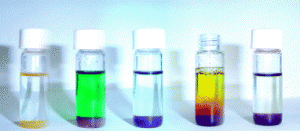Authors: Huw M. L. Davies , Abbas M. Walji, and Tadamichi Nagashima
J. Am. Chem. Soc.,
2004, 126 (13), 4271–4280
Dirhodium tetracarboxylates are readily immobilized on agitation in the presence of highly cross-linked polystyrene resins with a pyridine attachment. A systematic study demonstrates that the polymer backbone, the linker, the terminal pyridine group, and the catalyst structure all contribute to the efficiency of dirhodium catalyst immobilization. The immobilization is considered to be due to the combination of ligand coordination and encapsulation. The dirhodium tetraprolinate catalysts, Rh2(S-DOSP)4 (1a), Rh2(S-TBSP)4 (1b), and Rh2(S-biTISP)2 (2), are all efficiently immobilized. The resulting heterogeneous complexes are very effective catalysts for asymmetric cyclopropanation between methyl phenyldiazoacetate and styrene, and under optimized conditions they can be recycled five times with virtually no loss in enantioselectivity. The three-phase test studies indicated that a very slow reaction occurs when both the catalyst and the diazo compound were immobilized, but the slow rate precluded the likelihood that the cyclopropanation was predominately occurring by a release-and-capture mechanism.


